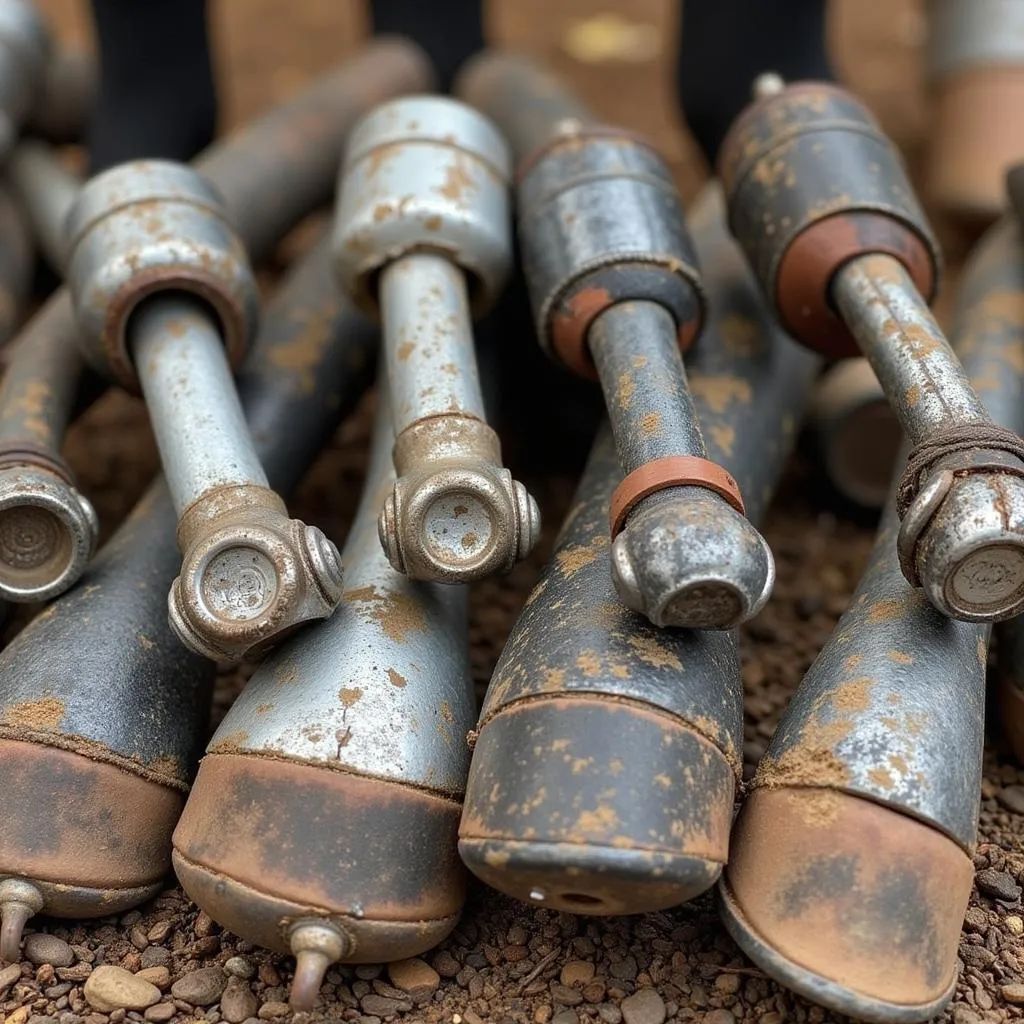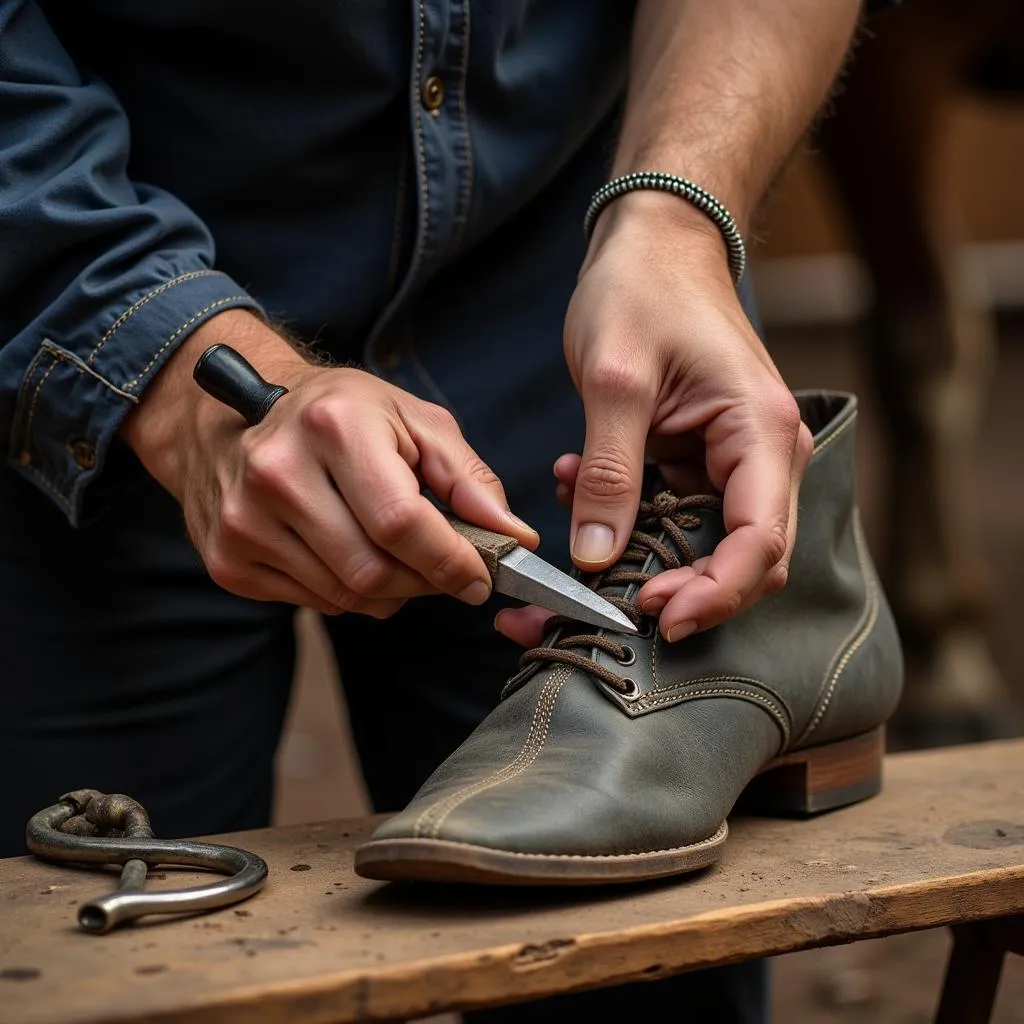Horse Racing Shoes, also known as racing plates, are an essential part of a racehorse’s gear. They provide traction, support, and protection for the horse’s hooves, ultimately impacting their speed and performance on the track. Unlike regular horseshoes, racing plates are lighter and thinner, designed to minimize interference with the horse’s natural gait while offering the necessary grip and support.
Understanding the Importance of Horse Racing Shoes
Just like a well-fitted pair of running shoes for a human athlete, racing plates are crucial for a racehorse’s performance. These specialized shoes serve several important functions:
- Traction: Racing plates provide the necessary grip on the track surface, allowing the horse to accelerate quickly and maintain speed throughout the race.
- Support: They offer support to the hooves, especially during high-speed turns and sprints, reducing the risk of slipping or stumbling.
- Protection: Racing plates protect the hooves from wear and tear, especially on hard surfaces like dirt tracks.
- Gait Enhancement: Specific types of racing plates can be used to influence a horse’s gait, encouraging longer strides or quicker foot action.
 Types of Horse Racing Shoes
Types of Horse Racing Shoes
Types of Horse Racing Shoes
Choosing the right type of racing plate depends on various factors like the horse’s individual needs, the racing surface, and even the weather conditions. Here’s a look at the most common types:
- Aluminum Shoes: The most popular choice for their lightweight and shock-absorbing properties, ideal for both dirt and turf tracks.
- Steel Shoes: More durable than aluminum, steel shoes provide excellent traction on wet or muddy tracks. However, they are heavier and can impact the horse’s speed.
- Combination Shoes: These shoes combine the lightweight nature of aluminum with the durability of steel, offering a balance between speed and protection.
Factors Influencing Racing Plate Selection
Selecting the appropriate racing shoes for a horse involves careful consideration of several factors:
- Track Surface: Dirt tracks require shoes with good grip, while turf tracks call for lighter shoes that allow for smoother movement.
- Weather Conditions: Dry tracks necessitate shoes with less aggressive traction, while wet or muddy conditions demand plates with deeper grooves and toe grabs.
- Horse’s Gait and Stride: The horse’s natural movement patterns, stride length, and foot action are all considered when choosing the right shoe shape and weight.
- Horse’s Health and History: Previous injuries, hoof conditions, and the horse’s overall health play a crucial role in shoe selection.
The Art of Shoeing a Racehorse
Shoeing a racehorse is a specialized skill that requires a trained and experienced farrier. They carefully assess the horse’s hooves, gait, and overall condition before selecting and fitting the appropriate racing plates. The process involves:
- Trimming the Hooves: Excess hoof growth is trimmed to ensure a proper fit for the shoes.
- Shaping the Shoes: Racing plates are shaped and customized to match the horse’s hooves and desired gait.
- Nailing the Shoes: The shoes are secured to the hooves using specialized nails, ensuring a secure and comfortable fit.
 Farrier Shoeing a Racehorse
Farrier Shoeing a Racehorse
The Impact of Horse Racing Shoes on Performance
The right pair of racing plates can significantly impact a horse’s performance on the track. They can:
- Improve Traction: Ensuring a secure grip on the track, allowing the horse to accelerate quickly and maintain speed.
- Enhance Stride Length: Specific shoe designs can encourage a longer stride, covering more ground with each step.
- Optimize Energy Efficiency: Lightweight shoes reduce the energy expenditure of the horse, allowing them to conserve energy for the final sprint.
- Reduce the Risk of Injuries: Proper shoeing provides support and protection for the hooves, minimizing the risk of slips, stumbles, and injuries.
Conclusion
Horse racing shoes are not just pieces of metal; they are meticulously designed tools that play a crucial role in a racehorse’s performance and well-being. Selecting the right type of shoe, tailored to the horse’s individual needs and the racing conditions, can significantly impact their speed, stamina, and overall success on the track. It’s a testament to the careful collaboration between farriers, trainers, and the horses themselves, all striving for that winning edge. For all your horse racing shoe needs and expert advice, contact Justus Horses USA at 0772127271, email us at [email protected], or visit our location at QGM2+WX2, Vị Trung, Vị Thuỷ, Hậu Giang, Việt Nam. Our team is available 24/7 to assist you.